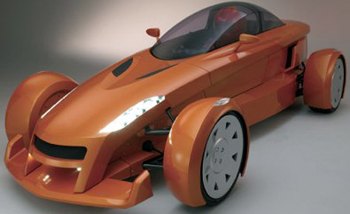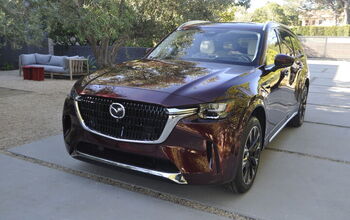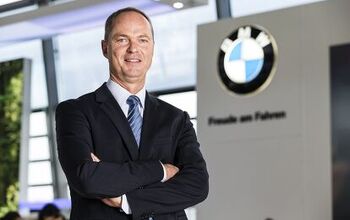A New Kid in Town?
In the last century, US car buyers have watched some three thousand automobile companies come and go. Today, Ford, GM and Daimler Chrysler represent the remaining fortunes of the US auto industry. But The Big Three needn't be The Only Three. With modern manufacturing and management tools, another US company could enter the fray. A partnership involving original equipment suppliers and an existing dealer network could be just the ticket to change the rules of a game that Detroit seems determined to lose. The prospective players…
Magna International Inc. supplies automakers with a wide range of OEM (Original Equipment Manufacture) parts. Founded by Frank Stronach, the worldwide conglomerate consists of seven groups: Cosma (chassis), Decoma (plastic body panels, exterior trim and fascias), Intior Automotive (cockpit modules, seats, doors, panels, locks and window systems), Magna Donnelly (mirrors, windows, door handles, automotive electronics), Magna Drivetrain, Magna Steyr (powertrains and general engineering) and Tesma (engines, transmissions and fuel components). Magna has considerable experience co-coordinating complete automobile production, from initial design to final assembly.
Delphi manufactures brakes, engine electronics, body hardware, safety devices (side airbags), audio systems and interior components (steering wheels, HVAC systems, instrument panels, etc.). The company is an industry leader in vehicle stability systems and anti-lock brakes, with superb facilities for testing and validation. Although Delphi's onerous UAW contracts and misplaced faith in birth parent GM have sent the company spiraling towards bankruptcy, there's no question that they have a tremendous reservoir of talented engineers and production workers.
AutoNation is America's largest retailer of new and used cars, with 278 dealerships. Their network may not rival that of The Big Three, but it's roughly the same size as Saturn's original dealer group. AutoNation is known as a risk taker that's not afraid to take the tough decisions it needs to compete.
Why would these three companies want to join forces? Magna and Delphi are fighting an uphill battle in an increasingly cutthroat business. The Big Three have forced them into endless rounds of vicious cost-cutting. The bloodletting continues, even as the suppliers struggle to compete against Asian companies paying their workers less per day than Magna and Delphi pay theirs for an hour's labor. Clearly, the business of being a Tier 1 Supplier no longer generates significant profits for either organization.
For its part, AutoNation earns its crust selling cars whose margins have been pared to the bone. As the middleman, they're at the mercy of the rising and falling fortunes of indifferent and bureaucratic automobile manufacturers– despite being closerthanthis to their customers.
Working in concert, Magna, Delphi and AutoNation have the motive, means and opportunity to create an entirely new automobile from the ground up. This new car– this new brand– could begin life free from the dead hand of the past. The group could launch a fresh product with bold marketing and a highly-motivated sales force (thanks to higher margins). They could boldly go where The Big Three can only limp along.
Of course, there are plenty of missing pieces to the puzzle, including the new car's engine. The powerplant could be sourced from… competitors. Many automakers sell engines to their rivals; Honda continues to provide complete engines to GM. What's more, Delphi's expertise in engine controls means they'd only require a basic engine. All the other necessary components– transmissions, tires, glass and paint– could be easily purchased from US suppliers.
As for the production facility for the new vehicle, the decline in automobile manufacturing around Detroit offers plenty of opportunities. Ford's soon-to-be-abandoned Wixom plant is just one potential solution. Ironically, Michigan is spending millions upgrading the roads and bridges around the plant for better access. There's every reason to believe the state would add tax incentives and abatements to help secure new jobs and a new future for the area.
Imagine building a new small car with the quirkiness of the MINI, the practicality of a Scion and the usefulness of a PT Cruiser. Install a class-leading engine for performance and handling, price the product correctly, market it cleverly and support it with first-class sales and service. As long as the Delphi/Magna/AutoNation group maintained a single-minded focus on producing a high-quality model, the new car could signal the dawn of a new era of American ingenuity and innovation.
More by Bob Elton
Latest Car Reviews
Read moreLatest Product Reviews
Read moreRecent Comments
- TheEndlessEnigma My 2016 FiST has been the most reliable car I've owned.
- MaintenanceCosts I already set out total costs, so this time I'll list what's had to be done on my cars (not counting oil changes, recall, or free services):2019 Bolt (25k mi): new 12v battery, pending tires & battery cooling service2016 Highlander (from 43k to 69k mi): new front rotors, new pads all around, new PCV valve, 2x 12v batteries, light bulbs, pending tires2011 335i (from 89k to 91k): new valve cover gasket, new spark plugs, light bulbs, pending rear main seal1995 Legend (from 185k to 203k): timing belt/water pump, new EGR valve + pipe, struts, strut bushings, drive axles, tie rods, rear control arms, other suspension bushings, coolant hose & brake lines throughout, belts, radiator, valve cover gaskets, new power antenna, 12v battery, coils, spark plugs, tires, rear pads... it's an old car!
- VoGhost Consistent with CR's data. I've spent about $150 total on the Model 3 in six years of ownership, outside of tires.
- VoGhost It's just plain sad that Posky doesn't know that EV batteries are warrantied for 8 years / 100K miles.
- Jkross22 It used to be depreciation was the most expensive part of car ownership. Seems like those days are over (New EVs and lux cars excluded). Maintenance + insurance have taken over. Dealerships offering 2 years of maintenance means nothing. That's $200 tops. It's the unexpected repairs - a wiring harness, computer module, heater core, AWD problems - that will cost dearly. Brakes can be expensive since many cars now can't have rotors resurfaced. Even independents are charging a lot for this work.


































Comments
Join the conversation